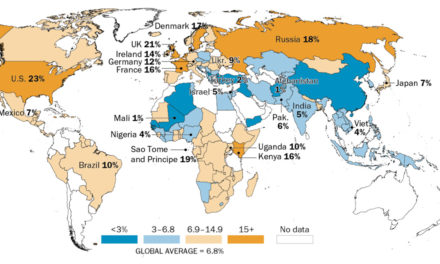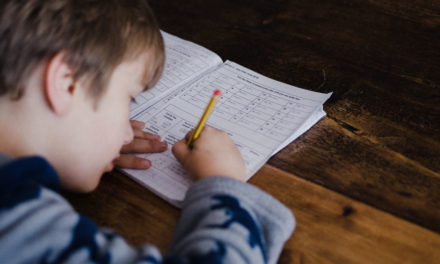(Caution: Links to book reviews with graphic and disturbing content.)
A Maryland school board voted last month to protect children by restricting school instructional and supplemental materials that contain sexually explicit content. The board defined “sexually explicit content” as “unambiguously describing, depicting, showing, or writing about sex or sex acts in a detailed or graphic manner.”
The Carroll County Public School Board adopted the measure after parents, some of whom are affiliated with the Carroll County Chapter of Moms for Liberty, challenged almost 60 books, many of which were then pulled from district libraries.
As is typical, many media reports – and their allies quoted in news stories – attacked parental rights and portrayed the board’s decision to protect children as negative and harmful. This is a very consistent response from those who want children to read sexualized, profane and inappropriate material.
Here are three ways the media and their allies dodge the real issues and work to push offensive books on children.
1. Frame the narrative as “book banning,” “censorship,” and a “freedom of speech” issue.
WBAL TV in Baltimore labelled the restrictions a “controversial book ban policy.” CBS News published a story about the ongoing school board debate, calling the restrictions a “book banning policy.”
Maryland Matters described the issue as a battle over the First Amendment and freedom of speech, saying “First Amendment advocates” were fighting a “growing number of book bans.” The news outlet uses phrases like “book bans” or “banned books” 39 times in one article – framing the protection of children as some sort of attack on democracy, “freedom of expression” and “the freedom to read.
The Baltimore Post Examiner’s article was titled, “Carroll County Public School System bows to Moms for Liberty and bans books on sex.” The article is illustrated with an ominous pile of books being burned.
New post: Carroll County Public School System bows to Moms for Liberty and bans books on sex https://t.co/0GNy69Yw0O
— BaltPostExam (@BaltPostExam) January 17, 2024
The not-so-subtle insinuation is that parents who want to safeguard their children are totalitarians – perhaps even hosting weekly book burnings and roasting hotdogs and marshmallows over flaming copies of Gender Queer and All Boys Aren’t Blue!
This hysteria is fomented by groups like the American Library Association (ALA), an advocacy group with a “Library Bill of Rights” that proclaims, “A person’s right to use a library should not be denied or abridged because of origin, age, background, or views.”
The group states, “The American Library Association opposes all attempts to restrict access to library services, materials, and facilities based on the age of library users,” and the group believes patrons have the right to “privacy and confidentiality in their library use” regardless of age.
The ALA gets a lot of mileage out of promoting “Banned Books Week,” which lists books that have been challenged – which usually means someone objects to the content of a book and the age group to whom the book is being targeted. Almost always, as the American Library Association admits, books are challenged because they have sexually explicit or offensive content – and are marketed to or recommended for minors in public schools or libraries.
Does anyone seriously believe these books are really “banned” – unavailable for purchase or reading in America? Are publishers shut down by goose-stepping police officers? Do we see book warehouses going up in flames from fires set by angry mobs of parents or government officials?
As Tiffany Justice, co-founder of Moms for Liberty, told MSNBC’s Joy Reid recently, “No books are being banned. … No one’s banning books. Write the book, print the book, publish the book, put the book in the public library, sell the book.” Just don’t push the book on school children.
2. Never, never, never quote or show pictures from the objectionable books.
The Wall Street Journal published an article, “There Were 1,269 Efforts to Ban Books in 2022. These Were the Most Targeted” – again, the Journal uses the language of “banning” and “censoring.” The article quotes the American Library Association which states, “Common reasons for attempting to censor these books included allegations they were sexually explicit or included LGBT content and profanity.”
But does the Journal discuss the content of the books? Quote from them? Show readers what’s in them?
Nope. Likewise, ABC News, The Washington Post, and The New York Times, have all reported stories on so-called “book bans,” but none of them quoted content or showed pictures from the books being discussed.
The ALA lists the top 10 challenged books each year, including the top three reasons books receive challenges:
- The material was considered to be “sexually explicit.”
- The material contained “offensive language.”
- The materials was “unsuited to any age group” [sic].
But does the ALA quote or show pictures from the books on the list? No. You have to go to parents advocacy groups, like Book Looks, No Left Turn in Education and Texans Wake Up to read actual reviews and content from hundreds of books (Caution: Some of these excerpts are really nasty, with explicit, obscene and profane material).
The media – and other advocates of inappropriate material for children – don’t show the actual content of the books they want children to read.
3. Frame the issue as “discrimination” or “an attack on diversity.”
The Washington Post did an investigative series, analyzing book challenges in school districts across the county. To be fair, the Post sometimes offers a brief description of a book or lists some of the reasons books are challenged: “Out of 986 total challenges in school libraries, 598 listed ‘sexual’ content as a reason.”
The article lists other top reasons parents request books be reviewed or removed from school libraries, including that the books contain pornographic, graphic, inappropriate, explicit, profane, illegal, violent or obscene content.
But what does the Post focus on? The article states, “42% of the books challenged have LGBTQ characters or themes,” and 28% of the challenges are books with “characters of color” or the book “deals with race.”Of the top 10 books challenged, the Post notes that two feature “LGBTQ” characters and themes, three deal with “POC” (people of color), and two deal with both.
The clear implication? Book challenges come from “racist,” “homophobic,” “transphobic” bigots.
The article does not include any of the objectionable excerpts from any of the books, except for a mention of the book Gender Queer, “a memoir about being nonbinary which depicts oral sex and masturbation” and objects used in sexual activity – in both words and drawings.
Maybe those are reasons parents don’t want the book in public schools.
The reporter also notes:
In 37 percent of objections against LGBTQ titles, challengers wrote that they believed the books should not remain in libraries specifically because they feature LGBTQ lives or stories.
What the article doesn’t explain is that many of the books with LGBT themes and characters are targeted at young children – even though the article does acknowledge that parents across the country don’t want children indoctrinated into LGBT ideology in schools – especially young children:
Roughly 70 percent of adults believe it is inappropriate for teachers to discuss trans identity in kindergarten through fifth grade, the poll found, while slightly more than 50 percent believe it is also inappropriate in sixth through eighth grade.
It’s simple: Parents don’t want offensive books in public schools.
But the media and their allies portray this simple truth as if parents are in the wrong.
Related articles and resources:
Our free resource Back to School – For Parents helps you understand what’s happening in schools and take practical steps to protect your children. The downloadable PDF includes sections on libraries and classrooms, explains parents’ rights, suggests action steps, lists helpful organizations, and gives guidance for talking with children about these issues.
American Library Association Chooses Marxist Lesbian as President-Elect
‘Banned Books Week’ – What a Fraud
Montana Library Commission Votes to Leave American Library Association Due to Marxist President
LGBT Activists, NEA and Librarians Promote Annual ‘Transgender’ Reading Day in Schools
Sexualizing Schoolchildren: Classroom and Library Books
Focus on the Family:
Child or Teen Disturbed by Exposure to Pornography
Counseling Consultation and Referrals
Image from Shutterstock.






